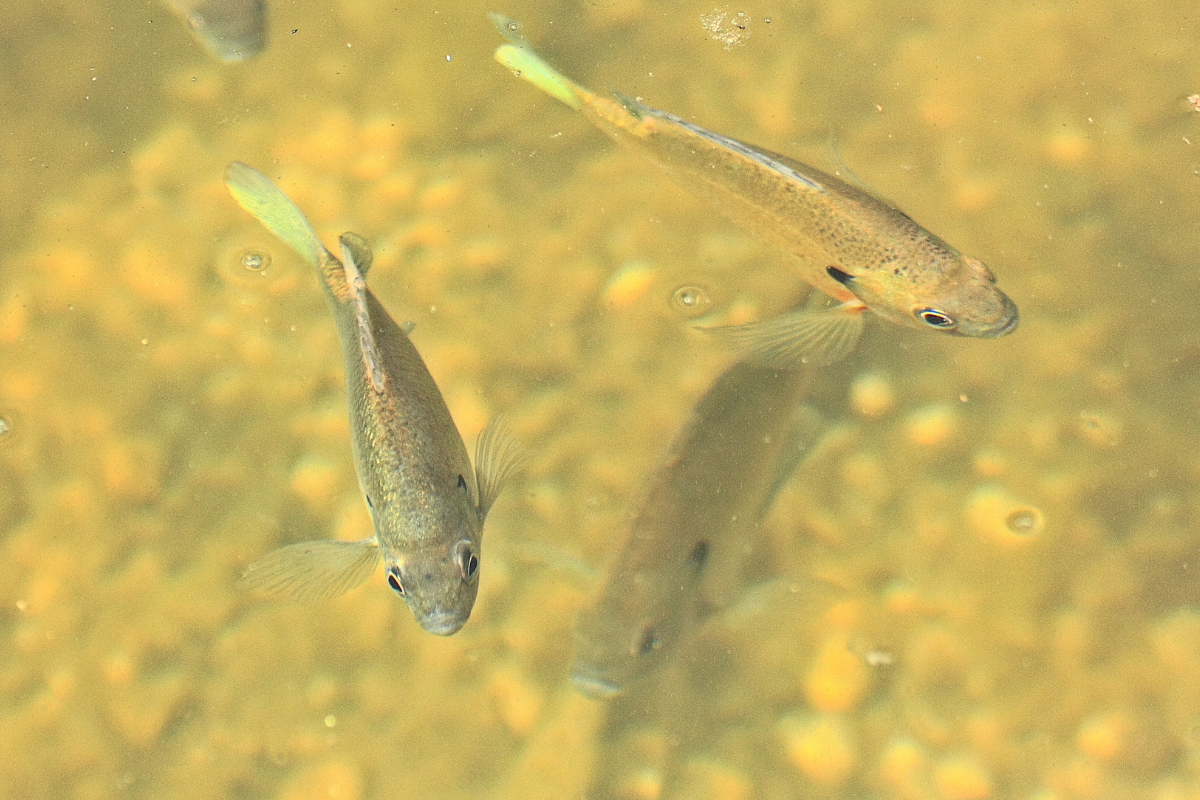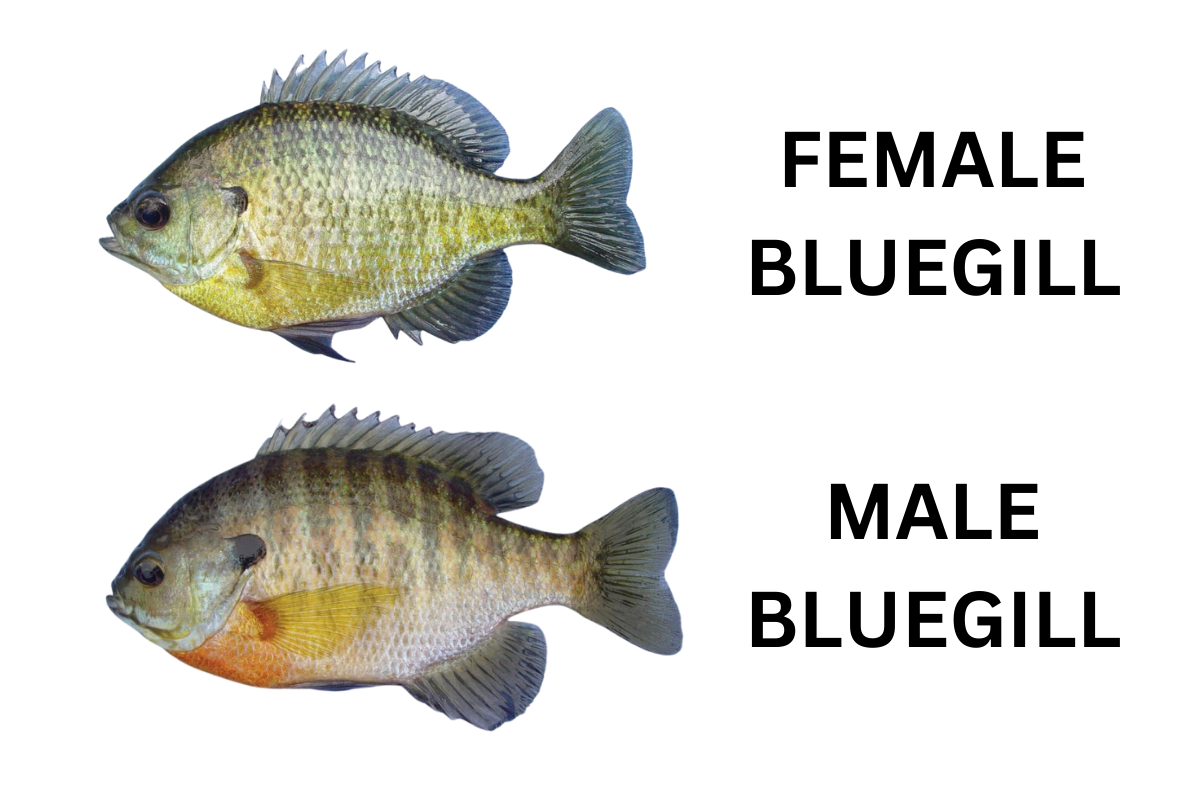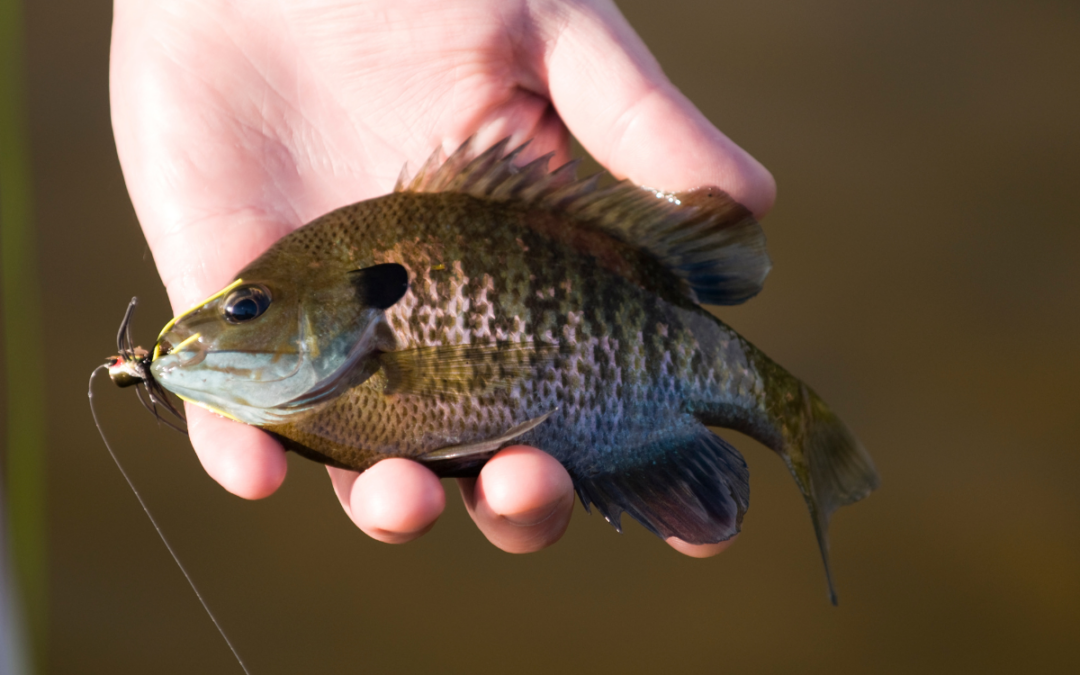Our previous blog discussed the importance of large male bluegills to pond management. These dominant males are usually 9″ or larger and they exhibit strong nest-guarding behavior. The ability to guard the nest improves parental care for the offspring and ensures that more of them will hatch and survive. The more offspring that survive, the more big bluegill genetics that are added to the population.
The behavior exhibited by the dominant male bluegill is a traditional reproductive strategy that is common across the animal kingdom. But there are also “alternative reproductive tactics” that are seen in bluegill and other fish. These tactics involve “sneaker” and “satellite” male bluegill that attempt to steal reproductive attempts from the dominant male. This phenomenon is called “kleptogamy,” which simply means stealing gametes. In this blog we’ll describe some of these alternative reproductive tactics of bluegill and explain how the presence of sneaker or satellite males would affect your pond management strategy.
Sneaker Male Bluegill
Sneaky males or “sneakers” are male bluegill that are able to reach reproductive maturity at a smaller size and younger age. These male bluegill are considerably smaller than the dominant male bluegill that guards the nest, but they are able to fertilize the eggs in a nest via sneaky fertilizations.
The dominant male bluegill will chase these sneaker males from the nesting site. But due to their smaller size, they’re not as threatened by them as they are larger bluegill. To the dominant male bluegill, the sneaker male appears to be a young male bluegill that is not yet able to reproduce.
Using the disguise of a reproductively immature male, the sneaker males will lurk around the outskirts of the nesting sites during spawning periods. When they see a window of opportunity, they’ll dart into the nest and fertilize the eggs deposited by the female bluegill. Their smaller size allows them to move fast and sneak fertilizations when possible.
Numerous studies have shown that these sneaker males have evolved larger testes as a function of their overall body weight. This allows them to produce more sperm and increases the chances that their sneaky fertilization will be successful. Studies have also found that the flagella are longer on sneaker sperm, allowing them to swim faster and increase the likelihood of a successful sneaky fertilization.

Satellite Males
Satellite males also steal fertilization attempts from dominant male bluegill, but they do it in a different way. Satellite males are larger than sneaker males, but their coloration is similar to that of a female. When the satellite males are roaming around a nesting area, the dominant male is not threatened because it looks like another female.
When given the opportunity, the satellite male will fertilize newly deposited eggs in an attempt to steal the fertilization from the dominant male. Studies have shown that testes size as a function of body weight is also larger with satellite males compared to dominant males. The testes aren’t as large of the sneaker males though. This is likely due to the difference in fertilization strategy. Because the satellite males are mimicking the coloration female bluegill, they have a higher chance of being successful with fewer sperm per attempt.

How Does Kleptogamy Affect Pond Management?
Unless you were to dissect each bluegill that you catch, there’s not a great way to determine how much of this sneaky behavior is occurring in your pond or fishery. But there’s no doubt that this alternative reproductive strategy could result in your average bluegill size decreasing over the long term.
Regardless whether kleptogamy is present in your pond, the bluegill harvest strategy should be the same. Return the larger males (> 9″) to the water so they can continue to add their dominant genetics to the population. Keep all the smaller males (< 7″) and females for your fish fry. This will ensure that you’re also removing some of those sneaker or satellite males in the process!
Let Up Help Improve Your Pond!
If you’re in the south GA or north FL areas, we’ll be glad to help with your new pond or an existing pond that is struggling to maintain healthy fish populations. Just complete this form and we’ll contact you to schedule a time to meet. We look forward to turning your pond into a productive fishery for years to come!

